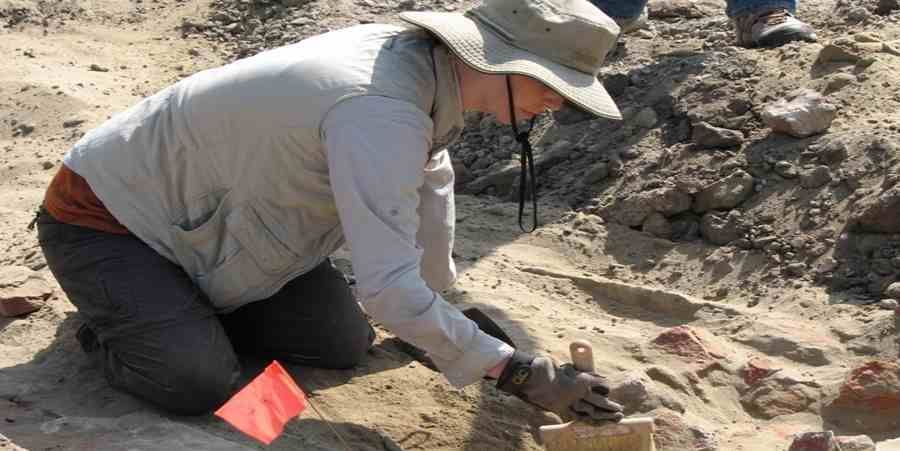A unique home from nearly 4,000 years ago. years were discovered in Maszkowice
It had a stone foundation and was larger than other structures within the settlement. Inside, archaeologists discovered objects made of bronze and an ornament made of amber – scientists have discovered a house in Maszkowice dating back almost 4 thousand. years, where the elite of the settlement lived.
A unique house and other huts located within the settlement, whichóhe oldest known monumental stone wall in Poland protected the site, which archaeologists discovered during this year’s research. Researchers came across its perfectly preserved relics already in 2011., but only last year they managed to determine its exact age at almost 4 thousand. years, which has become a sensation in the archaeological world.
– The very fact that we managed to discover the relics of the houseóThe picture from that period is a real treat for us. In present-day Poland, there are very few similar remains. An additional curiosity is the discovery of a unique house, because it was built on a stone foundation,” the excavation’s leader, Ph. Martin S. She came from the Institute of Archaeology of the Jagiellonian University in Cracow.
Home, wyróThe fortified settlement in Maszkowice was located in the Carpathian pass on the route of the Głogów trail.
Dr hab. The arrival of the poreóThe construction with a stone foundation to support theóevelopment of early housesóThe list also includes more than 700 recently discovered speciesórach – the foundation was intended to harden the ground in areas prone to subsidence and erosion. On their foundation, the builders made wooden walls, probably from whole logsód.
The house was uniqueóWe have also found a number of other reasonsów. First of all, it was larger than the others within the fortifications. In its interior, archaeologists have discovered relics thatóThe wooden structure was not present in the other neighbouring houses.
– Detailedóbronze, a newly used alloy of copper and tin, was particularly valuable in this period. It is visible among theód óThe fascination of the early population with this metal. Inside the biggest house, we discovered melted fragments of this raw material. Due to its value, its tiniest fragments were meticulously collected and preserved – says dr hab. Arrived. In the interior of the house, the researchers found only one ready-made bronze object – a pin for fastening robes.
Inside the house inhabited by the settlement’s elite, archaeologists have also unearthed a large bead of Baltic amber – it was at this time that objects made of this raw material began to appear in Greece.
– All the artefacts we have discovered prove that the inhabitants of this house and settlement could have actively participated in the trade between the Mediterraneanónternational and Baltic Sea. They may have been guarding the trailóThe archaeologist convinces. The fortified settlement in Maszkowice was situated in the Carpathian pass on the route of theóin leading the way with póNorth to South.
According to estimatesóIn the researchers’ opinion, the settlement was suddenly abandoned around 1550-1500. p.n.e., after 80-264 years of functioning. Scientists have no data from whichóThe evidence is that a catastrophe or invasion contributed to this. However, about halfway through its habitation, a large fire occurred. However, the wooden houses were rebuilt – they were larger than the earlier ones, but fewer of them were built.
Scientists are certain that at least some of the inhabitantsóin the settlement came from distant, middleóommarine or Adriatic sitesóOnly they knew the architectural know-how, whichóry allowed the stone walls to be erected in such a high-tech form. This is evidenced by the rófragments of ceramic vessels also discovered. Their forms indicate contacts with societies living in the middle Danube basin.
